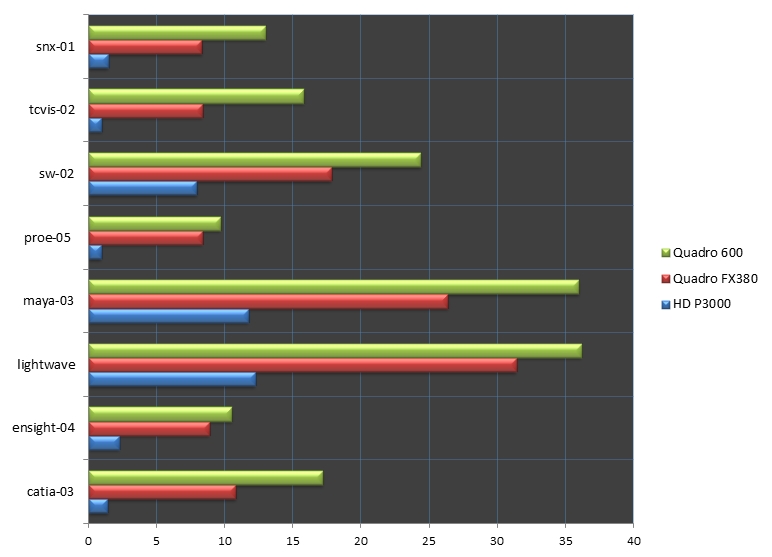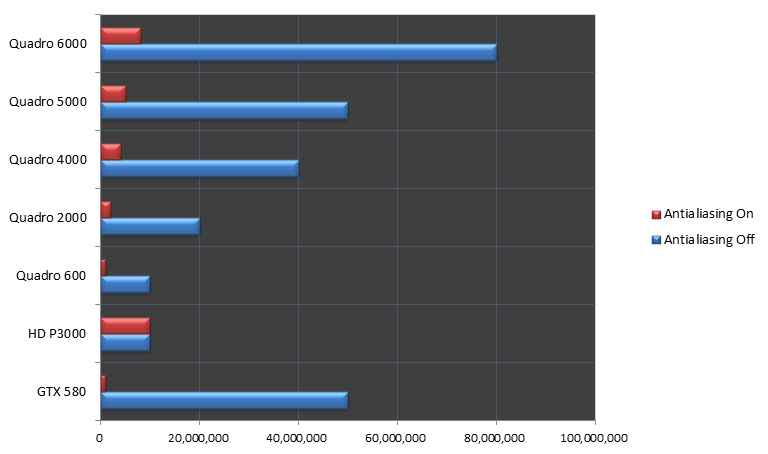Intel HD Graphics P3000 Workstation - Comparison and Application
 The company DEPO Computers releases a new model of the graphic station DEPO Race G650S, designed for CAD, 3D modeling and digital content processing. The model is based on the Intel C206 chipset, which provides users with a number of advantages over Sandy Bridge desktop chipsets. The first of the significant differences from the desktop platform is the support of second-generation Xeon processors and memory with error correction function, which allows to increase the fault tolerance and efficiency of the system when working with demanding applications. In addition to professional 3D video cards, when working in professional 2D / 3D applications, you can use the Intel HD Graphics P3000 graphics controller integrated into the core of the Intel Xeon E3-1275 processor. Thus, you can get the necessary performance when performing tasks of the initial level of complexity.
The company DEPO Computers releases a new model of the graphic station DEPO Race G650S, designed for CAD, 3D modeling and digital content processing. The model is based on the Intel C206 chipset, which provides users with a number of advantages over Sandy Bridge desktop chipsets. The first of the significant differences from the desktop platform is the support of second-generation Xeon processors and memory with error correction function, which allows to increase the fault tolerance and efficiency of the system when working with demanding applications. In addition to professional 3D video cards, when working in professional 2D / 3D applications, you can use the Intel HD Graphics P3000 graphics controller integrated into the core of the Intel Xeon E3-1275 processor. Thus, you can get the necessary performance when performing tasks of the initial level of complexity.The model has 2 integrated Intel 82574L Gigabit controllers, which will free up a PCI or PCI-E slot if you need two network connections. Among the shortcomings, it can be noted that the model does not support SLI. But it will not be a great loss, considering that the graphic station is more oriented towards professional graphics, and Quadro Fermi does not support the SLI mode. The DEPO Race G650S disk subsystem is based on a RAID 5 array of four hot-swappable disks. This allows you to quickly, without shutting down and not opening the workstation, to replace the failed disk, without losing important data.
Although the model does not support dual power supplies that would provide greater fault tolerance, the standard power supply is very reliable - the power is 500 W, the efficiency is 85%, the unit is certified according to the 80 Plus Bronze standard.
The SPECviewperf11 test suite showed the advantage of this model over a similar configuration on the Intel X58 platform using Quadro video cards. What is the Intel HD Graphics P3000 controller? First, we checked the operation of the integrated controller with the SPECviewperf11 test suite. For comparison, we did the same tests with NVIDIA Quadro FX380 and Quadro 600. Synthetic tests showed a serious gap between the younger Quadro of different generations from the HD Graphics P3000:
')

But in reality, it is not always the same as in synthetic tests. Therefore, we decided to test the operation of HD Graphics P3000 in real tasks on 3ds Max - the manual test revealed a completely different alignment of forces. According to the maximum number of polygons in the scene, which is permissible for comfortable work (20-25 frames per second), the HD Graphics P3000 graphics controller showed a result similar to the Quadro 600 - about 10 million polygons. But the maximum number of individual objects in the scene, which supports the controller HD Graphics P3000, while maintaining a stable performance during animation, was 3000 units. This is a result similar to that of the Quadro 6000 video card. And all this is taking into account the fact that a specialized driver for 3ds Max was installed for the Quadro from the NVIDIA website.
How does integrated graphics behave when antialiasing is enabled? We know from experience that the inclusion of this feature on NVIDIA cards led to a serious drop in performance: for Quadro 10 times, and for GeForce - 50 times! This was expressed in a decrease in the maximum number of polygons that a video card is capable of processing without a drop in performance. We present the data obtained when testing video cards in two modes - with and without anti-aliasing:

Studies have shown that the Intel HD Intel P3000 graphics controller integrated into the core of the Intel Xeon E3-1275 processor did not show a performance drop when the Antialiasing function was turned on. The only thing that can be noted not in his favor is the fact that the lines in this mode were displayed thicker than those of the Quadro, which can lead to inconveniences in modeling. The interest was also caused by the fact that the Intel HD Graphics 2000 graphics controller integrated into the core of the Intel Core i7-2600 processor showed exactly the same results as the P3000. Given the real differences between the two video controllers, this suggests that performance was limited by the capabilities of the driver, and not the hardware. I want to believe that Intel optimizes the drivers and allows to take full advantage of the capabilities of the new video core.
What follows from all this? We think that it is still premature to consider the integrated graphics controller Intel P3000 an adequate replacement for the younger Quadro in professional 3D applications. But in any case, there is a use for the controller - the Intel HD Graphics P3000 can be used in design applications, where the graphic load has an initial level of complexity.
We will be happy if anyone shares their experience of using HD Graphics P3000 with other professional CAD applications.
Usikoff ,
Technical Specialist DEPO Computers
Source: https://habr.com/ru/post/130316/
All Articles